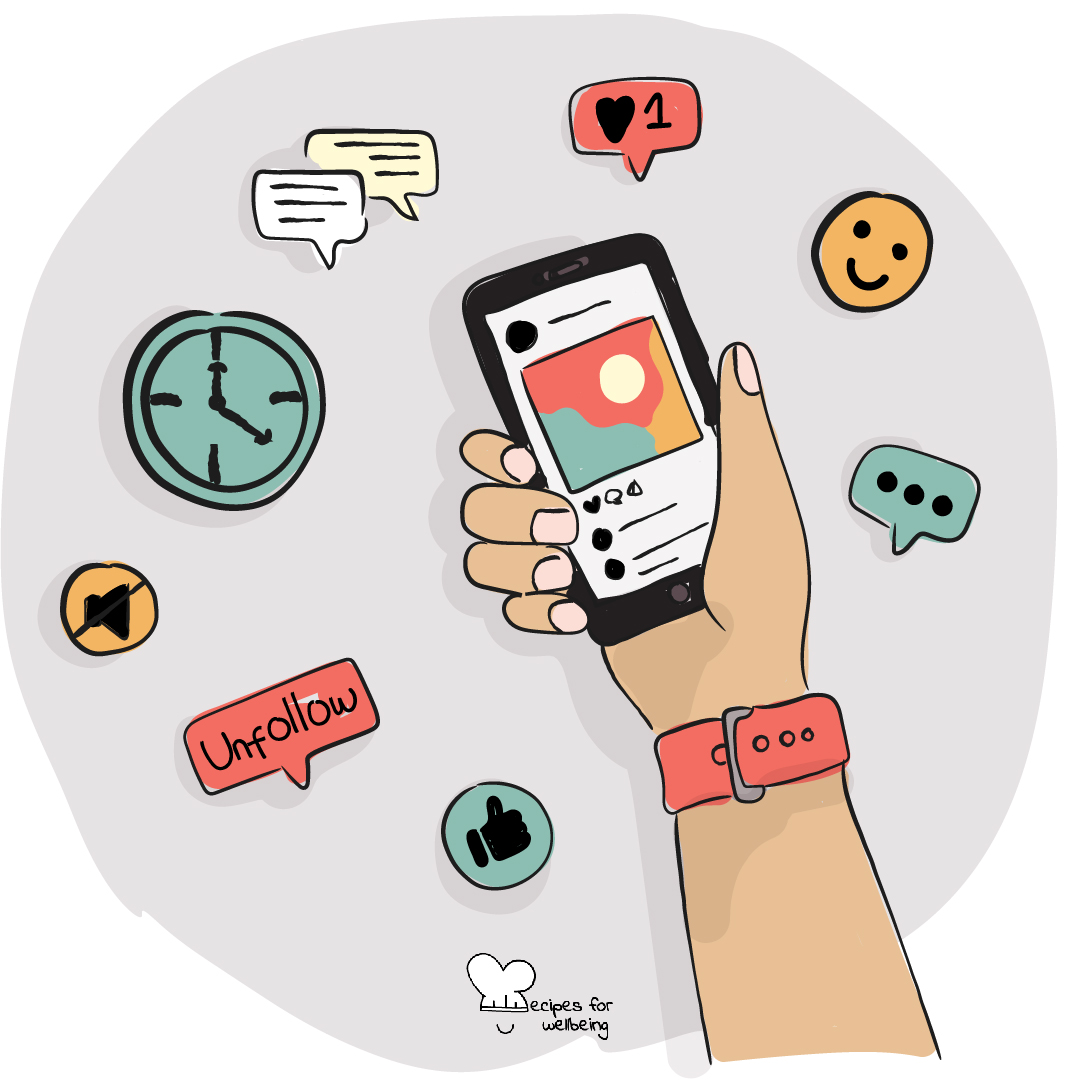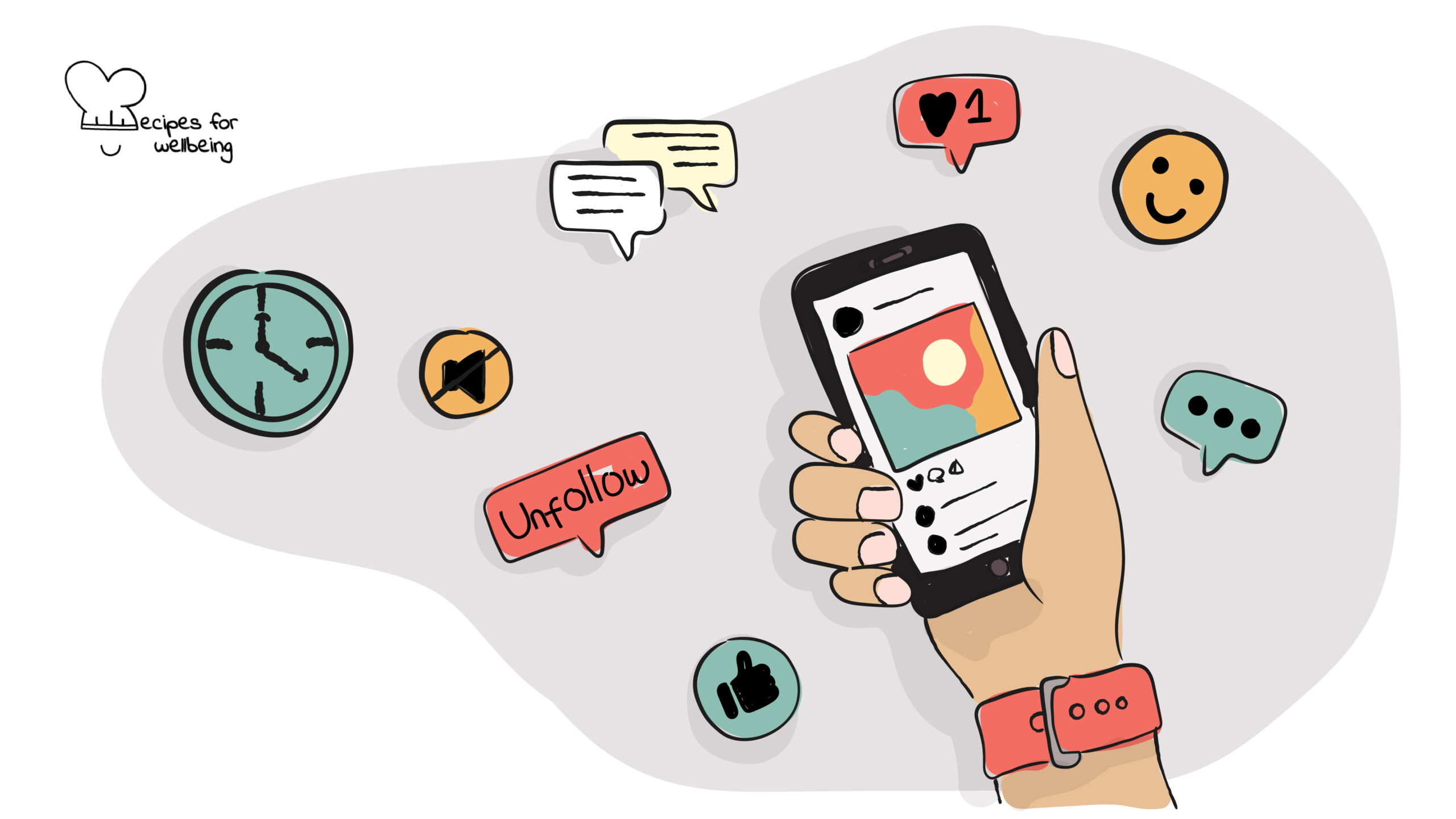
Controlling your social media feeds
It takes discipline not to let social media steal your time. — Alexis Ohanian
👥 Serves: 1 person
🎚 Difficulty: Easy
⏳ Total time: 61-120 minutes
🥣 Ingredients: Your social media device
🤓 Wholebeing Domains: Digital Consciousness
💪 Wholebeing Skills: Digital agency, Digital boundaries, Digital discernment, Digital relating

Controlling your social media feeds
📝 Description
Tips to manage your social media feeds.
When was the last time you went a day without checking your phone? Taking time to take a break from screens and to detox from technology is important for your health. However, since much of your job as a changemaker (and most people’s jobs in general) happens increasingly through screens, disconnecting may result to be more difficult than predicted or anticipated.
The following steps help you look after your mental health when unplugging is not an option. In particular, they suggest ways to control your social media feeds so that they do not have a negative impact on your mental wellbeing. The tips have been adapted from an article 7 Mental Health Tips for Social Media Managers written by Taylor Loren.
👣 Steps
Step 1 – Unfollow accounts
Many of us fall into the trap of comparing ourselves to others and feel inadequate in front of other people’s successes (even fellow organisations). Other times we feel overwhelmed by the amount of negativity and cynicism present on social media, which only hinders our efforts to keep positive in our work. If certain people/pages/accounts make you feel bad, you can simply unfollow them!
Make sure you follow people, organisations, etc. who are aligned with your values and fill you with positivity and hope for the present and the future. If you can’t unfollow someone for whatever reason, you can “mute” them on Instagram or Twitter or “unfollow” them on Facebook.
Step 2 – Mute keywords
At the moment, this feature is only available on Twitter, but it is worth giving it a try. If certain topics make you feel drained or depressed, you can mute specific keywords on Twitter. You can choose to mute them “forever” or just for a limited time, which is especially helpful during world events or news cycles that can be hard to read.
Step 3 – Welcome inspiration
In addition to step 1 where you can unfollow certain people/pages, remember that you can adapt your feed to bring you more positivity. Simply follow accounts that give you positive energy and inspire you to carry on with your work.
Step 4 – Control comments
Consider filtering comments to avoid having to deal with aggressive and offensive online comments. For instance, on Instagram you can block certain words or phrases, so any comments including those words won’t show up on your posts. You can also turn off commenting on specific Instagram posts, too, so you can post without having to hear your followers’ opinions or negativity.
Step 5 – Set intentions
Lastly, if you’re feeling like social media is taking a toll on your mental health, setting intentions for your social media time may help. Instead of logging on and endlessly scrolling, think about what exact tasks you need to accomplish and use your social media time wisely.

